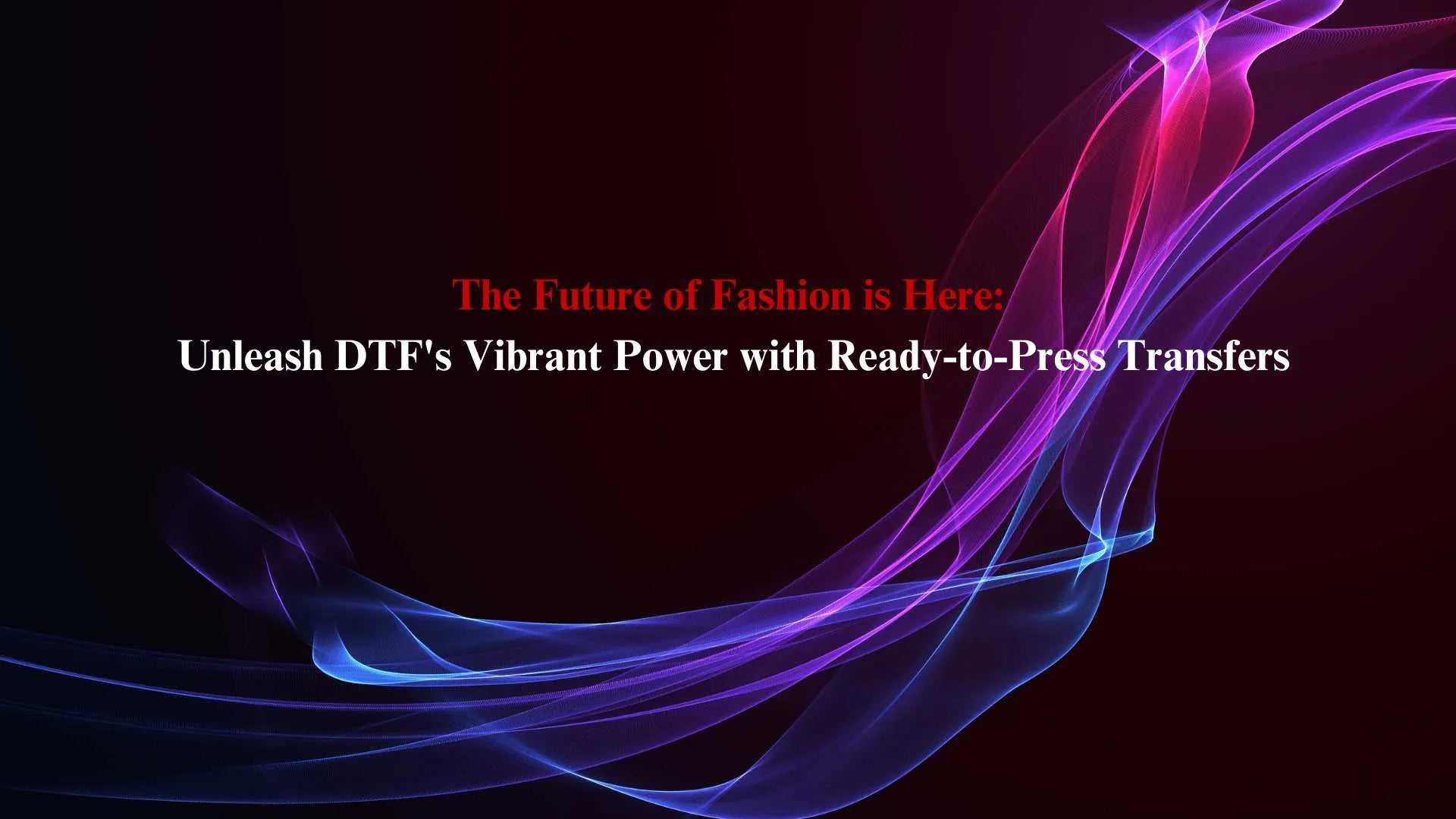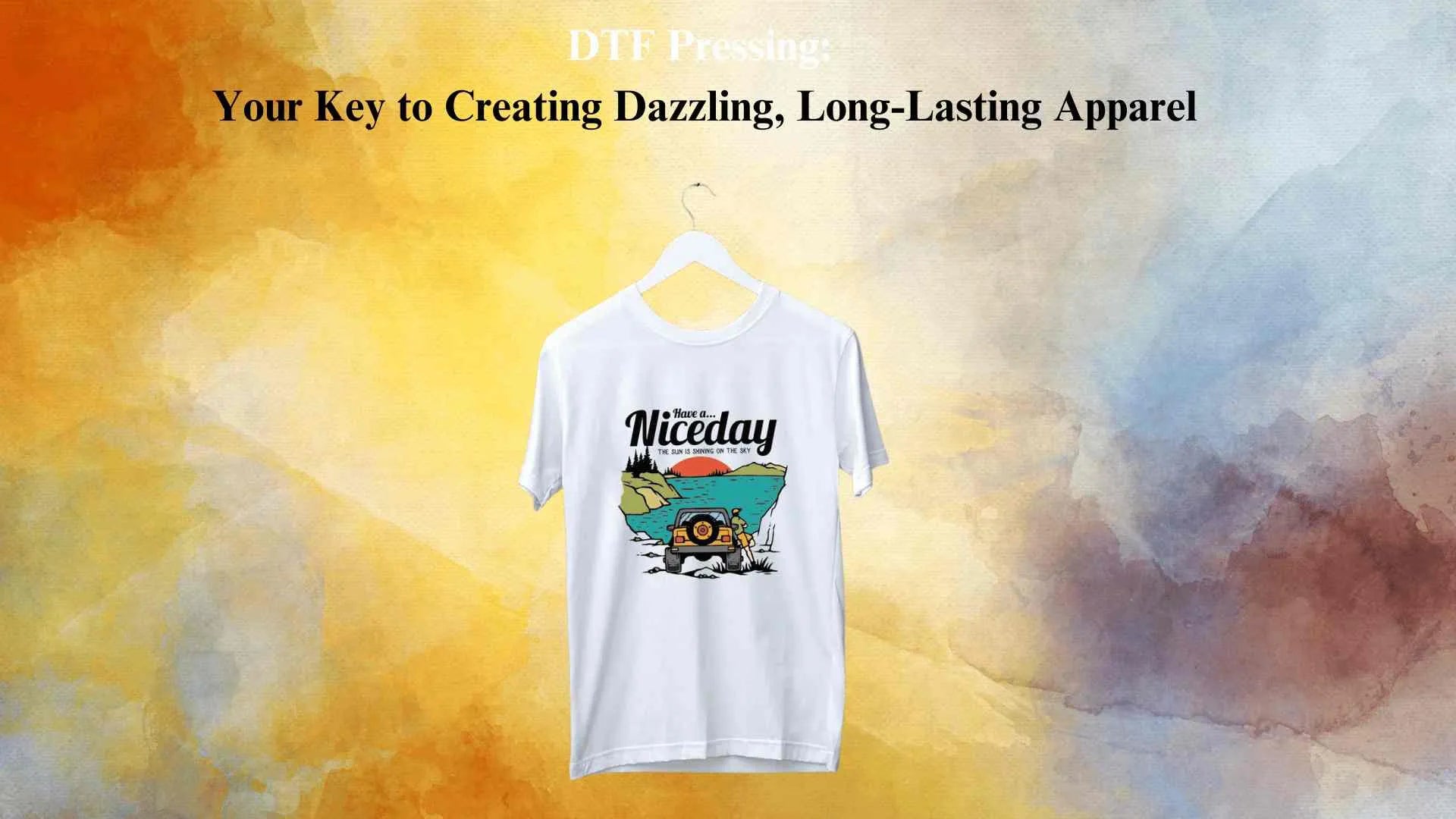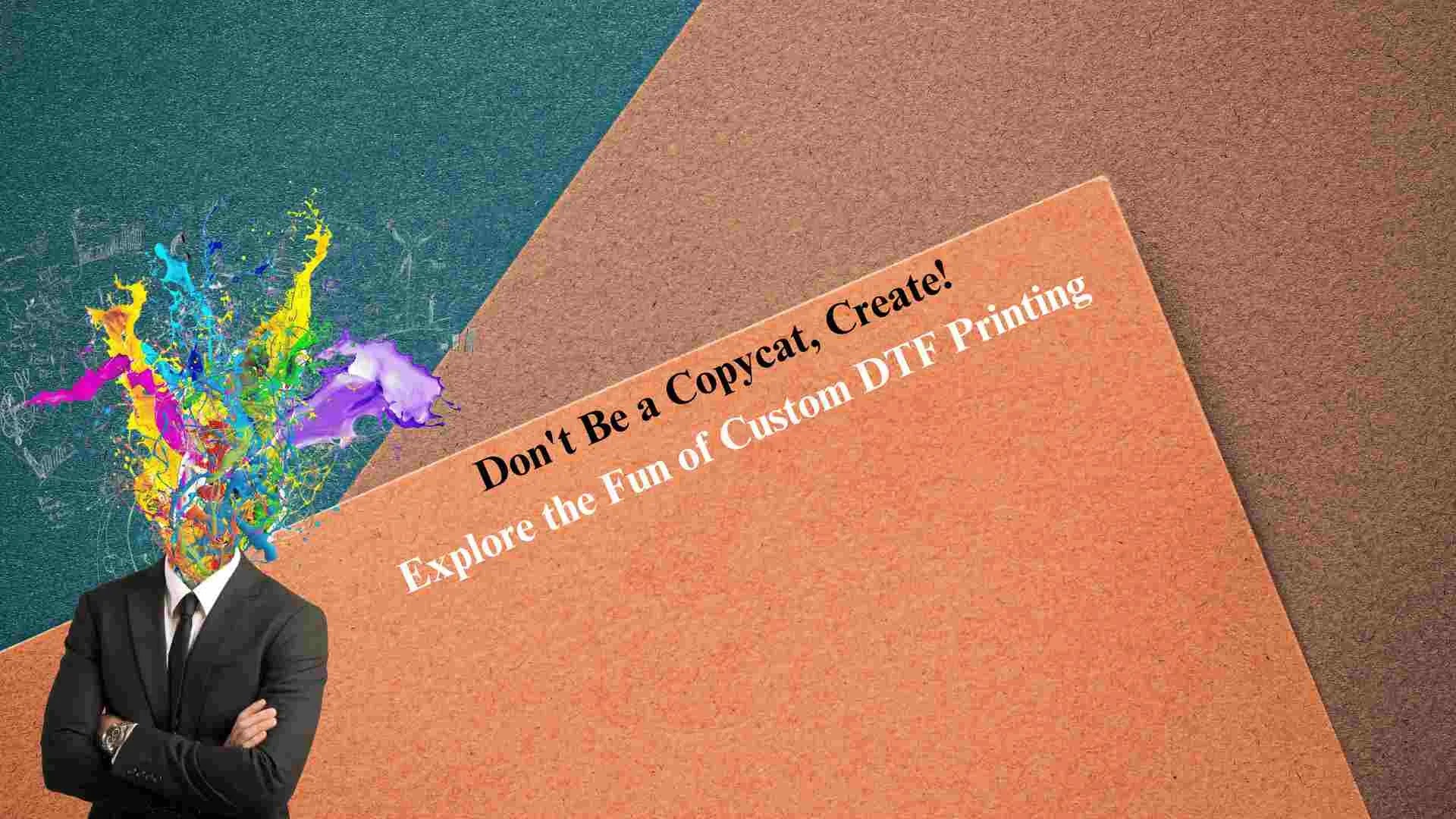
The Future of Fashion is Here: Unleash DTF's Vibrant Power with Ready-to-Press Transfers
The Rise of DTF Pressing: A Game-Changer in the Fashion Industry with Ready-to-Press Transfers
The world of custom apparel is undergoing a revolution, and at the forefront of this change is Direct-to-Film (DTF) printing. This innovative technology offers a faster, more versatile, and cost-effective way to create stunning designs on a wide range of garments. But what exactly is DTF pressing, and how is it transforming the fashion industry?
The Power of Ready-to-Press Transfers
DTF printing utilizes specially designed inks that are applied directly onto a film. This film is then coated with a powdered adhesive and heat-pressed onto the garment. The result? Vibrant, high-resolution designs that adhere to a variety of fabrics, including cotton, polyester, blends, and even dark-colored materials.
This process eliminates the limitations of traditional printing methods. Unlike screen printing, DTF pressing doesn't require creating individual screens for each color, making it ideal for small batch orders and on-demand printing. Additionally, DTF transfers offer superior detail compared to traditional heat transfers, allowing for intricate designs and photorealistic prints.
Understanding DTF Printing: Unleash the Power of Ready-to-Press Transfers
Have you ever dreamt of creating custom t-shirts, phone cases, or tote bags with vibrant designs, but balked at the limitations of traditional printing methods? Enter DTF printing, a revolutionary technique that empowers you with ready-to-press transfers for unmatched versatility and stunning results.
DTF Decoded: Direct to Film Printing Explained
DTF stands for Direct to Film. This innovative process involves creating your design digitally and printing it onto a specially-coated PET film. Unlike Direct to Garment (DTG) printing, which works best on cotton fabrics, DTF excels on a wider range of materials – cotton, polyester, blends, even dark-colored garments!
Advantages of DTF Pressing: Unleash the Power of Ready-to-Press Transfers
In the world of custom apparel, efficiency and quality are king. That's where Direct-to-Film (DTF) printing comes in. This innovative technique utilizes specially designed ready-to-press transfers to simplify garment decoration, offering a wealth of advantages for businesses and hobbyists alike. Advantages of DTF Pressing shine through in its ability to deliver vibrant designs on any garment, ensuring a high-quality finish that captivates. What sets DTF apart is its flexibility; whether you're running a small operation or managing large-scale production, Advantages of DTF Pressing remain consistent. This method not only streamlines the printing process but also allows for intricate and colorful designs, making it a top choice for those seeking efficiency without compromising on creativity.
Effortless Workflow: Embrace Simplicity
One of the most significant benefits of DTF pressing is its streamlined workflow. Unlike traditional methods like screen printing, DTF eliminates the need for pre-treating garments or creating screens for each design. With DTF, your designs are printed directly onto a film using a digital printer. This film is then coated with a special adhesive powder before being heat-pressed onto your chosen garment. This two-step process allows you to create stunning graphics on a variety of fabrics with minimal setup and preparation.
Vibrant Colors and Exceptional Detail: Make Your Designs Pop
DTF pressing boasts exceptional print quality, producing designs with rich, vibrant colors and sharp details. This is because the ink sits on top of the fabric rather than soaking into it, resulting in a crisp and clear image. Whether you're printing intricate logos, detailed photos, or photorealistic designs, DTF pressing ensures your creations come to life in stunning detail.
Unmatched Versatility: Decorate Beyond the T-Shirt
The beauty of DTF pressing lies in its versatility. Unlike some printing methods limited to specific fabrics, DTF transfers can adhere to a wide range of materials, including cotton, polyester blends, leather, wood, and even metal. This opens a world of possibilities for customization, allowing you to decorate t-shirts, hats, bags, phone cases, and even shoes with ease.
Cost-Effective Production: Boost Your Bottom Line
DTF pressing offers a cost-effective solution for both large and small production runs. The elimination of screens and pre-treatment processes reduces setup costs, while the use of ready-to-press transfers minimizes waste. Additionally, DTF printing is ideal for on-demand printing, allowing you to create custom garments without the need for large minimum order quantities.
Overcoming Challenges in DTF Printing: Achieve Vibrant, Ready-to-Press Transfers
Challenge 1: Color Inconsistencies
Inconsistent colors can be a source of frustration. The culprit could be an uncalibrated printer, incorrect software settings, or even clogged ink lines.
Solution: Regularly calibrate your DTF printer using a professional calibration tool. Double-check your software settings to ensure they match your ink and film combination. Perform routine cleaning cycles to prevent ink buildup that might affect color distribution.
Challenge 2: Film Wrinkling and Misalignment
Improper film tension can lead to wrinkles that distort the final print. This can happen if the film is too loose or unevenly stretched.
Solution: Invest in a high-quality film tensioning system to ensure consistent film placement. When manually stretching the film, maintain even pressure throughout to avoid wrinkles. Double-check alignment before printing to prevent misprints.
Challenge 3: Ink Bleeding and Low Washability
Improper curing can cause ink to bleed or feel rough on the garment, impacting washability.
Solution: Ensure you're using the correct heat press settings for your specific ink and film combination. Maintain consistent pressure and temperature during the curing process. Allow adequate cool-down time before handling the transfers.
Challenge 4: Shortcomings in Design Optimization
A well-designed image translates into a high-quality transfer. Low-resolution artwork can appear pixelated, while unnecessary background elements waste ink.
Solution: Use high-resolution artwork (ideally 300dpi or higher) for your designs. Remove any unwanted background elements before printing to optimize ink usage and achieve a clean, professional look.
By addressing these common challenges, you can achieve exceptional results with DTF printing. Remember, consistent maintenance, proper technique, and well-optimized designs are key to producing vibrant, durable, and ready-to-press transfers that elevate your garments.


Leave a comment
This site is protected by hCaptcha and the hCaptcha Privacy Policy and Terms of Service apply.